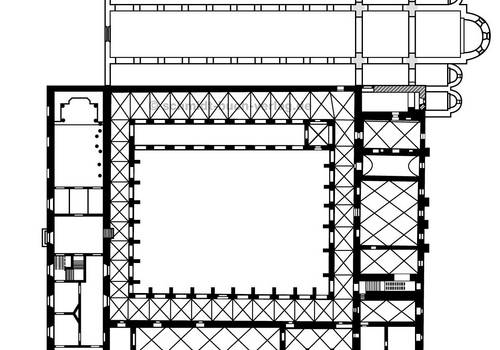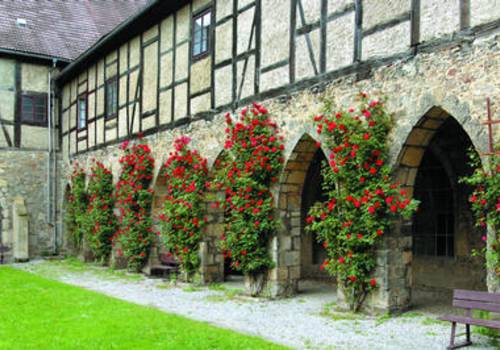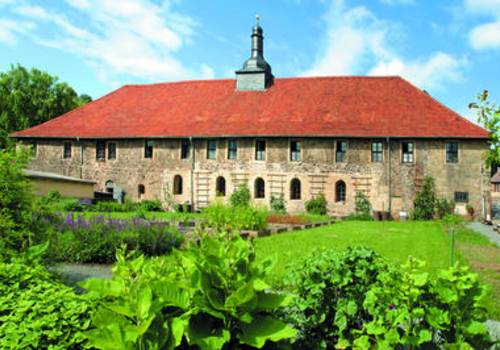Cistercian monastery of Michaelstein, Blankenburg
The monastery was established in 1147 on its present site, which was first documented in 956, under the considerable influence of the Quedlinburg abbess Beatrice II.
The most important parts of the precincts and monastery church were destroyed during the Peasant War. However, Romanesque basements from the 12th century can still be seen in the east and south wings. The capitals of the columns in the chapter room include ornamentation in the tradition of Königslutter, and palmette decorations.
The west wing was built by Duke Ludwig Rudolph in 1718-1720 as a baroque-style hunting lodge. Of particular interest is the mediaeval herb and root garden, which was designed in 1990 to be historically accurate. Some 260 different herbs used in mediaeval times are cultivated on an area of roughly 800m² in imitation of an enclosed monastery garden (hortus conclusus). The monastery herb garden would once have played a very important role as a supplier of remedies and an apothecary. The raised beds bordered by wooden planks form the centre-piece of the garden. Their design is based on 9th century sources.
The monastery is home to the State Music Academy of Saxony-Anhalt and the Institute of Performance Practice. Concerts are given and seminars held there.
The monastery museum contains a collection of some 700 musical instruments from the 17th 19th centuries.

![25 Jahre Siegel - Offi Seite [(c)Administrator]](https://www.strassederromanik.de/de/datei/anzeigen/id/79750,1050/25_jahre_siegel.png)


